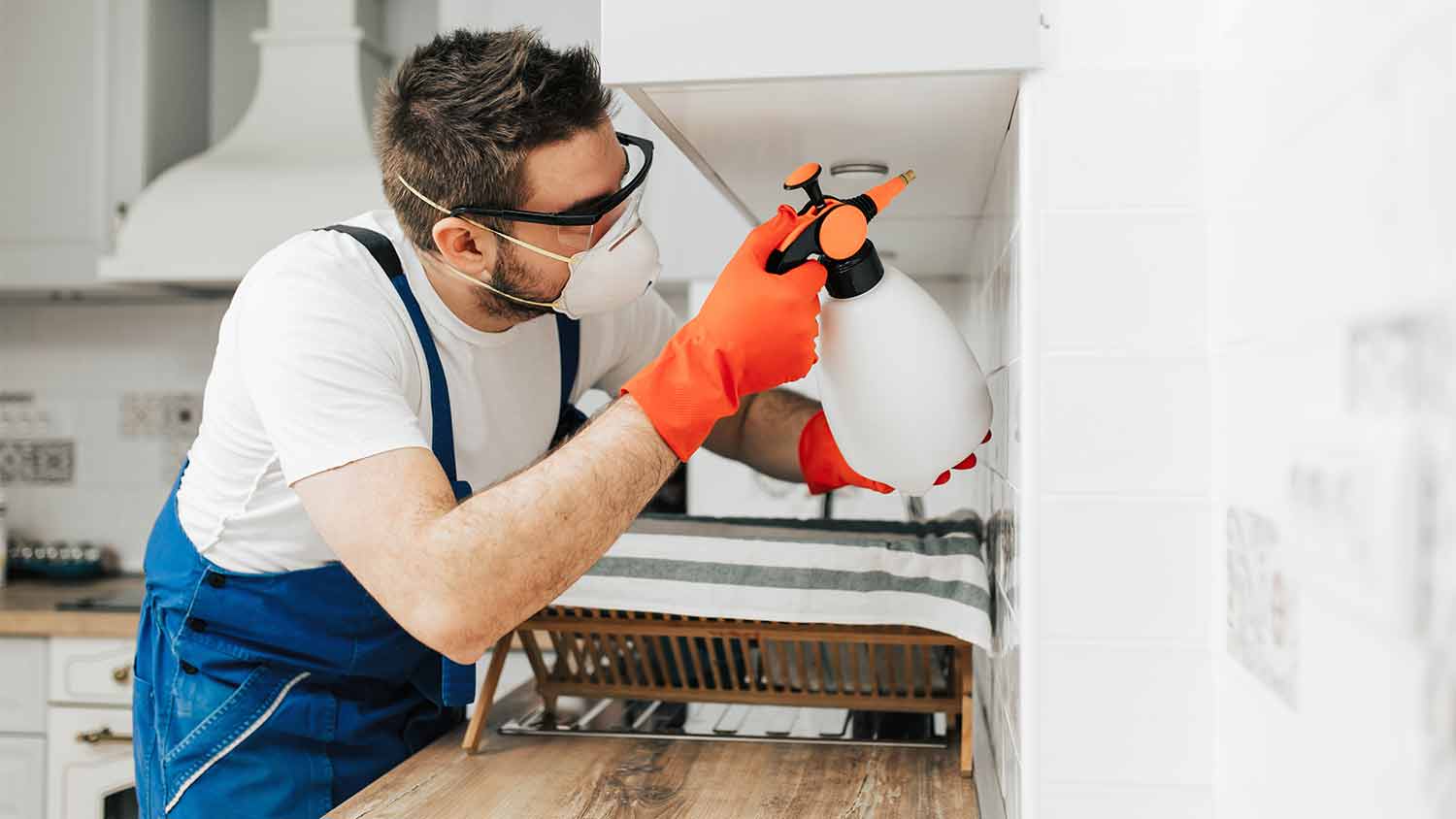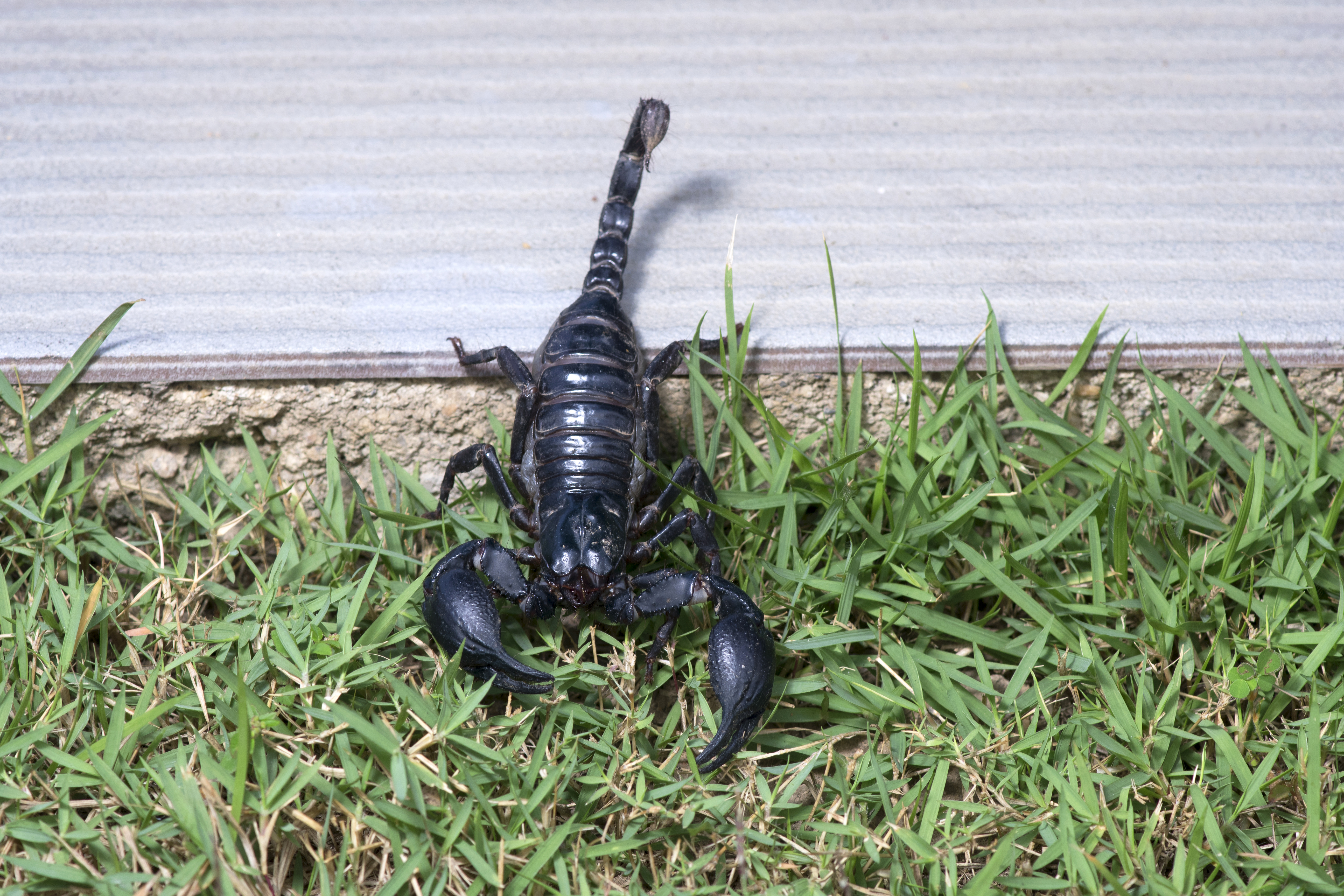
Find out how much it costs to remove armadillos and stop them from coming back. Know how much to budget to humanely remove these pesky critters from your yard.
Make sure your home isn't providing hospitable lodging for cockroaches by keeping the crumbs and clutter at bay


Finding a cockroach scuttling across your kitchen floor is enough to make your skin crawl—and where there’s one, more will likely follow. Roaches spread germs and bacterial diseases, and a major infestation can result in your home developing an unpleasant, musty odor. Don’t panic, though. By keeping your home clean and dry, your food securely stored, and access points sealed, you can keep these undesirable critters at bay. Learn how to ward off a cockroach infestation with these practical tips.
One of the simplest ways you can deter these scavenging insects from hanging around your home is by ensuring they don’t have access to a food source. Cockroaches are attracted to homes with regular and abundant trails of crumbs, uncovered bowls of pet food, open trash cans, or containers with food residue. Keep perishable food in airtight containers and throw away food waste in a sealed bin. Starchy and sugary materials are particularly attractive to roaches, but they eat a wide variety of things, including book bindings, feces, and even the inner lining of shoes!
Although they can survive up to two weeks without water, most types of cockroaches love moist, damp environments. While you can’t eliminate every water source or damp area, reducing them makes your home less attractive to these bugs.
Standing water in buckets or sinks, leaky or blocked pipes or faucets, and damp towels or washcloths are all things to avoid. Keep humid environments like bathrooms well ventilated—you could even use a dehumidifier if moisture is a big problem. In addition to wet environments, cockroaches are also fans of mold.

In addition to practicing proper food storage, you’ll also want to make sure surfaces and floors are clear of food debris and liquids.
Because cockroaches are more active at night, get into the habit of wiping kitchen surfaces clean and leaving no dirty dishes in the sink (tempting though it may be). Clean oven tops of grease—a cockroach favorite—and shake the toaster free of crumbs. Focus your cleaning efforts on the kitchen, but if you have kids that leave a trail of food around the house, make sure you regularly clean other places too. Even better: Designate an area for meals that’s easy to clean up—dropping crumbs down the side of the sofa or bed is a major no in the cockroach prevention playbook.
Daily vacuuming after supper is also a good habit. Not only does vacuuming get rid of any food crumbs, but if you already have cockroaches in your home, it helps to remove roach egg sacs and feces. These can attract other roaches because of their potent pheromones.
At the risk of making this sound like a list of cleaning tasks, by removing excessive clutter, you reduce the number of quiet, dark hiding spots available for cockroaches to take advantage of. Eliminate clutter by keeping magazines or papers from piling up, putting unused cardboard boxes into the recycling, cleaning behind furniture and appliances, and regularly dusting and sweeping.
Cardboard boxes don’t just make great hiding spots. The adhesive holding them together is starch-based, so you could unwittingly provide another food source by leaving them lying around. If you use boxes for storage, swapping them out for plastic tubs means they’re airtight and less attractive to roaches.
You might not be able to stop roaches from getting into your house, but you can limit the number that might make it in by sealing up as many routes as possible.
Seal cracks or crevices in walls and around doors and windows, and fix loose skirting and holes around pipework.
By keeping your yard free of damp hiding spots, you’re less likely to get roaches visiting your outside space and then finding their way into your home.
Keep shrubs and other dense plant growth from growing up against the side of your house, especially near entry points. Always clear up any garden waste—otherwise, it can mulch down into a perfect, humid hidey-hole for these critters. If you do use mulch and containers, try to keep them at least a foot away from your home's foundations and entryways. Knowing what types of roaches are common in your area is also essential to prevention. Do some research and then remove any food sources and hiding spots they like from your yard.

If you have taken all these measures and still spot signs of a cockroach infestation, call in a local licensed cockroach exterminator to prevent it from spiraling out of control. Unlike some natural methods for getting rid of cockroaches, professional treatment is more likely to offer a long-term solution and put your mind at ease when you have a major infestation. The average cost for cockroach extermination is around $300 for two treatments.
From average costs to expert advice, get all the answers you need to get your job done.

Find out how much it costs to remove armadillos and stop them from coming back. Know how much to budget to humanely remove these pesky critters from your yard.

If you need to get rid of bugs and pests making your home unsafe, it's time to decide if fumigation is necessary. Learn more about average fumigation costs.

Sometimes birds nest in unwelcome places. Find out how much bird nest removal will cost based on factors like location, bird species, and preventative measures.

Need to get rid of pesky pantry bugs from your kitchen? Follow our step-by-step guide to learn more.

Mouse droppings left in your home can harm your health. Learn how to clean mouse droppings and dispose of them safely using our complete guide.

Scorpions are creepy pests that you definitely don’t want near your living space. Find out how to keep scorpions away from your house.